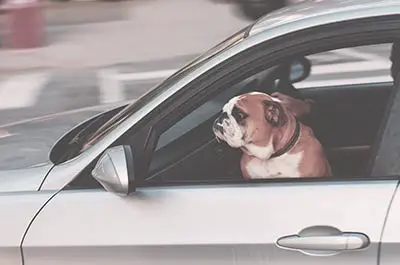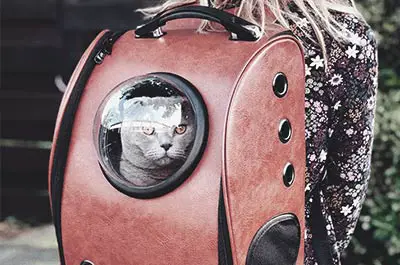If you’re like me, you love taking your pet with you on vacation. It’s a great way to have some company and keep your furry friend happy. But before you head out on your next trip, there are a few things you should know about traveling with pets. Here are 10 tips to help make your journey as smooth as possible.
Choose Your Travel Method Wisely.
Depending on your pet, you might want to consider taking a plane, car, bus, or train. Some animals prefer the comfort and convenience of riding in a vehicle, while others do better at each stop along the way if they’re allowed an extended walk. It’s best to choose the method that works best for both you and your pet so neither one is left out of having fun!

Many people love to take their pets with them on the plane, but this isn’t always the best way to travel. Some airlines have restrictions on how many animals are allowed in the cabin, and some charge an extra fee for this privilege.
If you’re transporting your pet as cargo, there are several other restrictions you should be aware of. Make sure you talk to your airline before you arrive at the airport so there are no surprises.
In addition to choosing a suitable travel method, you must book a comfortable seat for yourself as well as one for your pet. If your pet is going under the plane, bring a blanket to put on their carrier to help keep them warm and comfortable during takeoff and landing.
If you’re flying, make sure to book a flight that allows pets in the cabin with you.
Some airlines only allow pets in the cargo hold, and while this may be a safer option, it can also stress out your pet.
Review your airline’s policy about transporting pets or putting them under the plane in cargo. If you’re going abroad, find out whether you need to get any special documentation for your pet.
Some countries require air travelers to get a health certificate from their vet. This is typically valid for 10 days and should include the date of vaccinations and other pertinent information such as heartworm test results, medications, and dietary restrictions.
Keep in mind that you might not be able to take your pet on a flight with you if:
- Your pet is too old or sick and can’t handle the stress of flying.
- The airline restrictions forbid it.
- You’re taking a direct international flight, which typically doesn’t allow pets in the cabin with passengers unless they’re service animals or they’re traveling as cargo under certain conditions.
Give Your Pet a Good Grooming Before You Leave
If you’re taking your animal on the road with you, be sure to give them good grooming before leaving home. Not only will this prepare your pet for the trip, but it will also help minimize the amount of dirt and debris that comes into your vehicle during your travels.
You should leave plenty of time to give your pet good grooming before you go. This means brushing their coat, trimming their nails, giving them an all-over bath (if needed), cleaning their ears, and brushing their teeth.
This will make them more comfortable during the trip and less attractive to fleas and ticks. If your pet’s fur is matted or tangled, ask your vet about getting it trimmed professionally before your trip to avoid having this happen during travel.
Carry A Copy Of Your Pet’s Vaccination Records and Identification.

If you’re taking your pet on the road with you, it’s always a good idea to carry some form of identification. This is especially true if your animal will be traveling as cargo. Make sure the information on the tag is easy to read and that all of your contact information is current.
If you’re planning to take your pet on a plane, make sure you carry a copy of their vaccination records with you. You may need this information if there are unexpected delays or you must rebook.
It’s also good practice to bring along the number for the animal emergency hotline (if available) and keep it posted somewhere in your home where it can easily be seen in case of an emergency.
Take a Picture.
If you’re taking a permanent resident with you, it’s a great idea to take a picture of your pet in their everyday surroundings. It’ll help ease any worries they might have about being left alone and help calm them down when they get anxious during the trip.
If possible, use something familiar from home, such as your best friend’s favorite toy or bed, to set off the scene in the photo. In addition to taking pictures of your pet before you leave, make sure that someone else takes lots of pictures throughout your trip so that there are plenty of souvenirs to bring back when it’s all over and done with!
Pack Plenty Of Treats And Chew Toys.
If you’re taking your pet on a plane, it’s a good idea to pack lots of chew toys and treats. The turbulence during takeoff and landing can be uncomfortable for pets, not to mention the stress of all the new sights and smells. If your pet is chewing on something familiar, like a favorite toy, it can help calm them down and take their mind off of things.
If you’re taking your pet with you in your car or by train, be sure to pack lots of toys as well as treats (kibble works great). This will provide them with plenty of entertainment–and might even prevent any damage to your vehicle!
Pack Plenty Of Food And Water.

If you’re taking your pet with you in the car, be sure to pack lots of food and water for them. If possible, carry this in your vehicle rather than putting it in the cargo area. This way, if there is any delay or unexpected stop along the way, you can provide your pet with food and water without having to worry about holding up the line at a rest stop.
If you’re taking your pet on a plane and the trip is more than 12 hours, check with your vet about how much food to leave your pet with. Depending on the size of your animal, they may need one or two food bowls full per 12 hours.
It’s vital that your pet has plenty of food and water throughout the trip – some airlines require this, while others don’t allow pets in cargo if they lack these necessities. A good rule of thumb is to pack more water than food (remember that dry kibble can take up a lot of room) and pack one extra meal for every leg of the trip.
Consult your veterinarian.
It’s always a good idea to consult your veterinarian before leaving on any road trip. Your vet will be able to recommend safe and effective medications that might help ease your pet’s anxiety during travel. These medications (such as antidepressants and anti-anxiety drugs) can be helpful during travel but should only be used under the guidance of a veterinarian. Also, be sure to check with your vet if your pet needs any special care or containment during the trip (such as a kennel, a harness, or muzzles).
Your vet might also recommend that your pet get a thorough checkup before the trip. This is especially true if you’re expecting your pet to be traveling by air. Make sure to book an appointment several weeks in advance and well before the flight date.
Your pet might feel a little jittery about flying in a plane, but it’s nothing to be concerned about. Just remember these simple tips, and you’ll have a better, less stressful experience when flying with your pet!
Ask if animals are allowed in hotels or other places to stay before you go.
It’s a good idea to ask if animals are allowed in the hotel or other places you’re planning to stay before making your reservation. This way, you can make sure your pet will be able to join you during your trip. It’s also a good idea to ask ahead if pets are allowed in the restaurants and other places you’ll be spending time at.
You don’t want to find out that you’re unable to bring your pet in after you’ve already arrived.
You should also check on any other building rules regarding pets before you go. For example, some apartment buildings don’t allow pets even if they’re small enough to sit in a purse comfortably!
Make sure your pet is comfortable with his carrier.
If you’ve ever tried to put your pet in the carrier only to have them bolt, you know how important it is to make sure your pet is comfortable with that carrier. If your animal isn’t used to the carrier, you must spend time getting them accustomed to it.

Do this at least a day before the trip so that if your animal gets too anxious about traveling, you’ll have time to find a new method of transporting them.
If your pet is used to the carrier, there’s no need for any special acclimation before the trip. Just make sure that your pet has been inside it before and is comfortable doing so, as this will limit any anxiety they may feel about being locked inside.
If your pet doesn’t sit still in his carrier, you’re going to have a hard time keeping him in one! Even if it means leaving the carrier open for a few days before you go, make sure that your pet can comfortably enter and exit its carrier.
An excellent way to get your pet used to an open carrier is by using the top only (no bottom). Put some soft but sturdy material inside (maybe even something like an old t-shirt) so they won’t hurt themselves on the metal bars. Once your pet is comfortable with this, you can put the full carrier together.
Conclusion.
As you can see, there are many ways to make your pet’s trip more enjoyable.
Whether you’re traveling by air or car, your furry friend must have a good time too! Now go out and have some fun with your pets this summer!
Let me know if there are any questions or comments at all-I would love to hear them!

Meet Brenda Tillman: your go-to expert in Cognitive Behavioral Therapy! Not only is she a seasoned therapist, but she’s also a passionate mom blogger who never misses a beat. Dive deep into her insightful blogs, backed by her extensive coursework in Parenting Skills, Learning, and Education. Brenda’s heartwarming family – a son, two daughters, and their adorable pets – often take center stage in her writings. From parenting hacks and relationship tips to health & fitness nuggets, Brenda has been enlightening her readers for over half a decade. Stick around, and you’re bound to discover gems from a mom who wears many hats with grace!
Reviewed By: Joanna Perez and Marcella Raskin
Edited By: Lenny Terra
Fact Checked By: Gabrielle J. Smith
Photos Taken or Curated By: Matthew Mansour